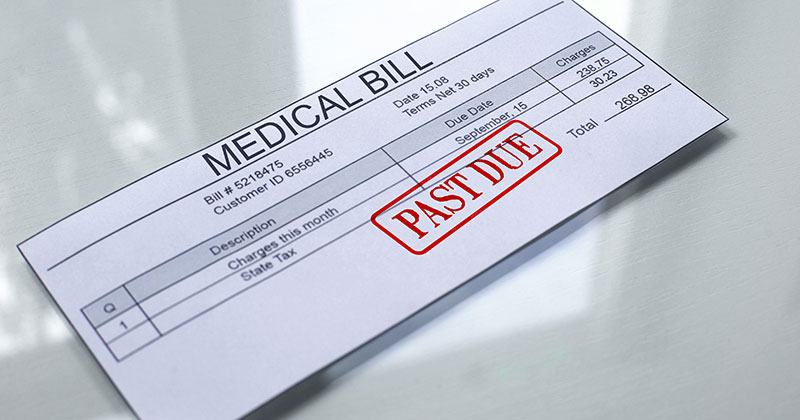7 Future Trends in Integrated Payments for Healthcare Providers

Keeping up with the economic trends of healthcare payment systems ensures your practice remains efficient and financially healthy. It helps you make changes that can positively impact billing, patient satisfaction, and revenue.
This article explores the current healthcare payment system landscape, highlights the top trends shaping the future, and offers practical tips for healthcare providers to stay ahead.
Understanding these trends and how to leverage them is key to navigating the ever-changing complexities of modern healthcare payments.
Let’s get started.
Healthcare Payment System Overview
The U.S. healthcare system is complicated.
As a healthcare provider, the regulations you adhere to and the resulting payment procedures vary based on your patients’ health insurance types. This could be insurance from their employer, a plan they purchased themselves, or government programs like Medicaid and Medicare.
These plans come with their own sets of rules, including high deductible options, managed care, and fee-for-service arrangements. Some might cover medications, too.
This evolving complexity impacts what services you can provide, how to code them correctly, and how to bill for them.
For example, hospitals typically receive payments for inpatient care through diagnostic-related group (DRG) systems. This method assigns a fixed payment for specific treatments, regardless of actual costs. It covers everything from room charges to medical procedures.
Outpatient services often use ambulatory payment classification (APC) codes. These follow a fee-for-service model.
Handling all the payment-related paperwork and billing is a big chunk of your administrative work.
The high cost of managing all these tasks is often cited as one of the reasons healthcare spending is so high. However, using technology to optimize these processes can streamline your practice’s operations and reduce costs.
Integrated payment systems, for example, can alleviate some of these administrative burdens. They automate the financial transactions associated with healthcare services. There’s no need for manual data entry, reducing the risk of human error and enhancing efficiency.
That’s why keeping up with economic and payment-related trends is essential for healthcare practices. It helps in making informed decisions that align with current and emerging financial landscapes.
RELATED ARTICLE: How to Increase Patient Collections in Your Practice

Top 7 Economic Trends in Healthcare Payments for 2024 and Beyond
The world of healthcare is always changing. Let’s look at some major trends that are shaping the future of healthcare payments.
1. Higher Healthcare Costs and Spending
Healthcare is getting more expensive. From 2021 to 2022, healthcare spending went up by 4.1%.
Staff, drugs, and supplies all cost more. As a result, running a healthcare practice is more expensive.
To deal with these rising costs, providers are trying to make their teams work smarter—not harder.
This could mean using technology to let patients book their own appointments or to connect different systems, like medical records and payments/billing. This frees up your staff to do other important work.
2. The Rise of Value-Based Care
Value-based care is another significant trend. This care model focuses on giving care based on evidence and centered on the patient. It aims to ensure people get the best possible care without wasting money.
Value-based care can lead to better health outcomes and greater patient satisfaction—all while keeping costs under control.
More and more, healthcare providers are either starting to use value-based care or are thinking about it.
Programs like Medicare are supporting this approach, too. They want all Medicare patients to be part of value-based care plans by 2030.
FROM ONE OF OUR PARTNERS: Patient Payment Solutions Help Doctors Focus on Providing Quality Care
3. More Payment Plans to Combat Poor Financial Literacy
Another trending industry focus is healthcare financial literacy.
About 71% of people find their medical bills confusing. This is meaningful because when bills are difficult to understand, people might struggle to pay them.
Payment plans can make bills simpler and easier to handle. They help patients by breaking down large medical costs into smaller, more manageable payments.
This is positive for patients because it makes paying less stressful. It’s good for healthcare providers, too, because it means they can more accurately forecast when and how they’ll get paid.

4. Policy Changes to Protect Patients
President Biden introduced the “Bidenomics” agenda. This agenda aims to lower healthcare costs and eliminate unexpected fees.
One big step is the No Surprises Act. This already stops as many as 1 million surprise bills every month.
There’s also a push to protect people from unfair medical debt.
For the first time ever, several big government groups are working together to decide if tactics like pushing patients to use medical credit cards are unfair or illegal.
5. Increased Adoption of Contactless Payments
Everyone wants things to be easy and quick, especially when it comes to paying bills.
In healthcare, there’s a big move towards contactless payments. This means using things like Apple Pay or Google Pay.
Healthcare facilities are starting to accept these quick, touch-free payments now in person and online.
For team members, this means getting familiar with new ways of accepting payments and ensuring patients know all their options.
FROM ONE OF OUR PARTNERS: 9 Trends for the Future of Medical Practices Everywhere
6. Greater Focus on Security
Nearly 1 out of 3 had their health data exposed in some way in 2023.
Healthcare is a hot target for people trying to commit fraud because there’s a lot of money moving around and a lot of personal information to steal. Healthcare providers must be careful about how they handle payments and protect patient information.
They should implement secure, encrypted payment processing systems and adhere to HIPAA regulations to safeguard patient data.
Using advanced cybersecurity measures and regular audits can prevent unauthorized access and ensure the integrity of financial transactions.
7. Payment Integrity in Healthcare Payments
Payment integrity (PI) means double-checking every bill and payment in healthcare. It’s a system that ensures everything adds up correctly.
PI takes place before a payment is sent out (pre-payment) and after the money has already been given to a healthcare provider (post-payment).
The PI industry is worth about $9 billion. It’s growing fast, too, because healthcare spending is rising, and billing is becoming more complex.
What’s more, new technology like AI and machine learning is changing how PI functions. These smart technologies can quickly look at large amounts of data and flag mistakes. They are accurate and reliable.
PI helps keep costs down, which is good for everyone—from patients and providers to insurance companies.
FROM ONE OF OUR PARTNERS: 4 Ways Online Patient Payments Can Transform Your Practice

Looking to the Future of Healthcare Integrated Payments
The way healthcare providers handle payments is always evolving. Here’s what you might see in the future:
- Bundled payments for efficiency. Patients could pay one price for everything related to a treatment. This can simplify the payment process for them while reducing administrative tasks for providers.
- Data analytics in payment systems. With smart technology, payment systems can use data to spot trends, find errors, and predict future costs.
- Blockchain for secure information sharing. Blockchain is a secure way to share information. In healthcare, it could help providers access medical records safely and process payments while following all privacy laws.
- Better payment connections. All parts of healthcare, from doctors to device manufacturers, are finding new ways to integrate payments. This facilitates real-time data sharing, reduces billing errors, and enables personalized payment plans. It also ensures financial clarity and patient care efficiency.
- Making care more affordable. Looking ahead, there will continue to be a focus on making healthcare more accessible. Strategies could include transparent upfront pricing, discounts for early payment, and programs to help those who can’t afford care.
RELATED ARTICLE: How to Know If You Should Outsource Your Medical Billing
How to Embrace Economic Trends of the Healthcare Payment System at Your Practice
Here are a few practical steps you can take to keep your practice up to date with the latest in healthcare payments:
- Research integrated payment providers. Start by looking into different companies that offer integrated payment solutions. These providers can help you set up a system where everything from billing to payment processing works together. Look for providers with good reviews from other healthcare practices and compare their features and costs.
- Educate your staff on cybersecurity measures. Empower your team with knowledge of the latest cybersecurity protocols to safeguard patient data and financial transactions. Implementing ongoing education and drills can protect your practice against digital threats.
- Implement contactless and digital payment methods. Adapt to the changing payment landscape by integrating contactless and digital payment options.
- Evaluate your administrative costs. Take a close look at your current spending on administrative tasks related to billing and payments. Identify areas where costs can be reduced, leading to improved financial management and resource allocation.
- Identify automation opportunities in payments. Assess your payment processes for tasks that can be automated. Consider invoicing, payment reminders, reconciliation, or even patient-directed payment plans. By automating payment processes, you can minimize mistakes, save time, and boost the efficiency of your payment system.